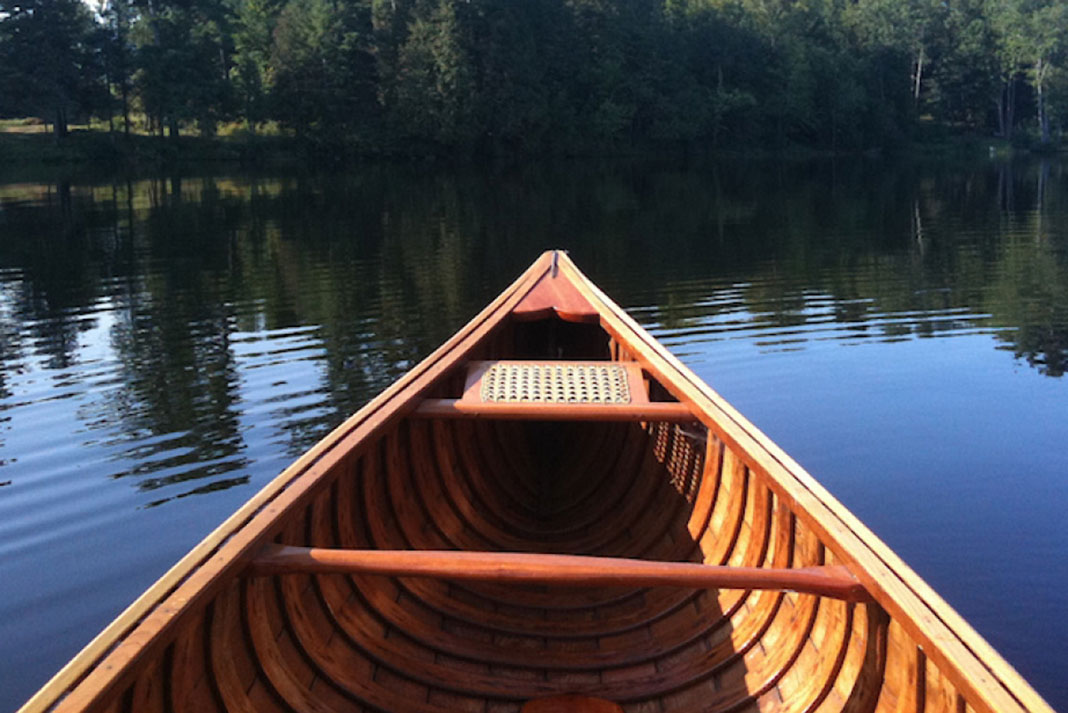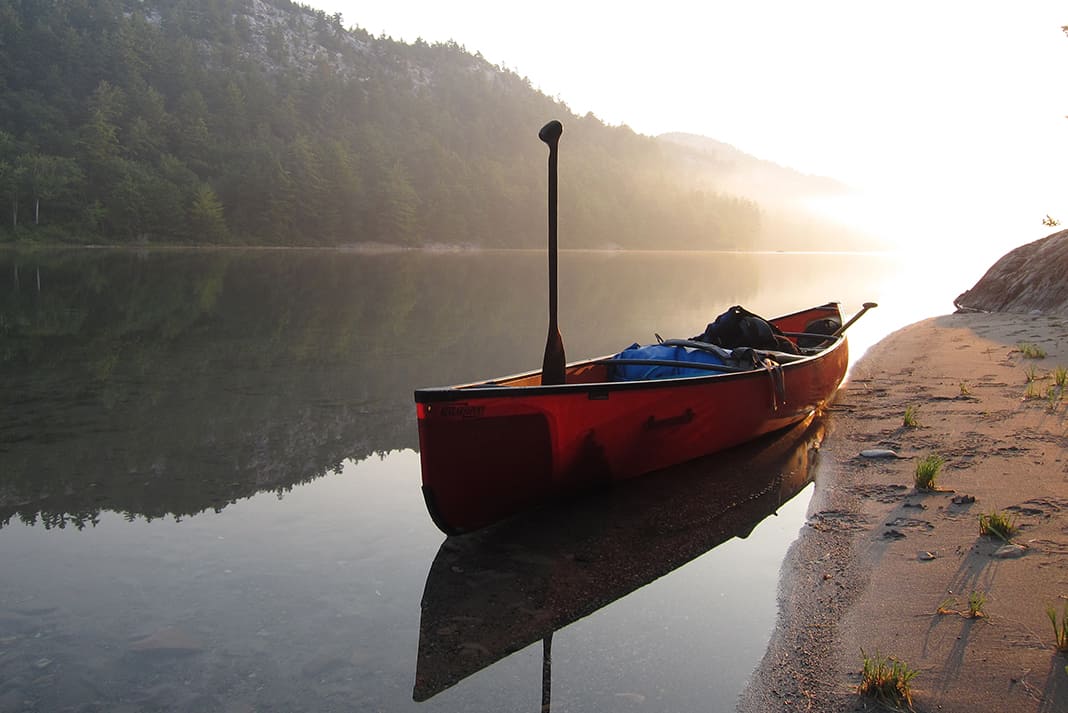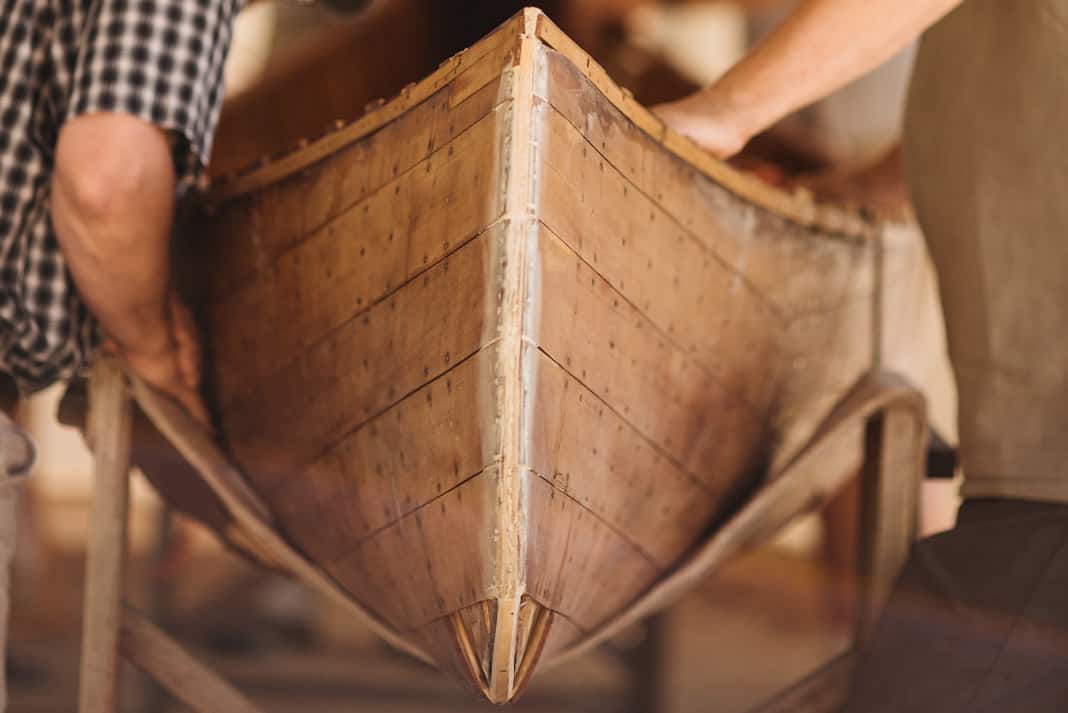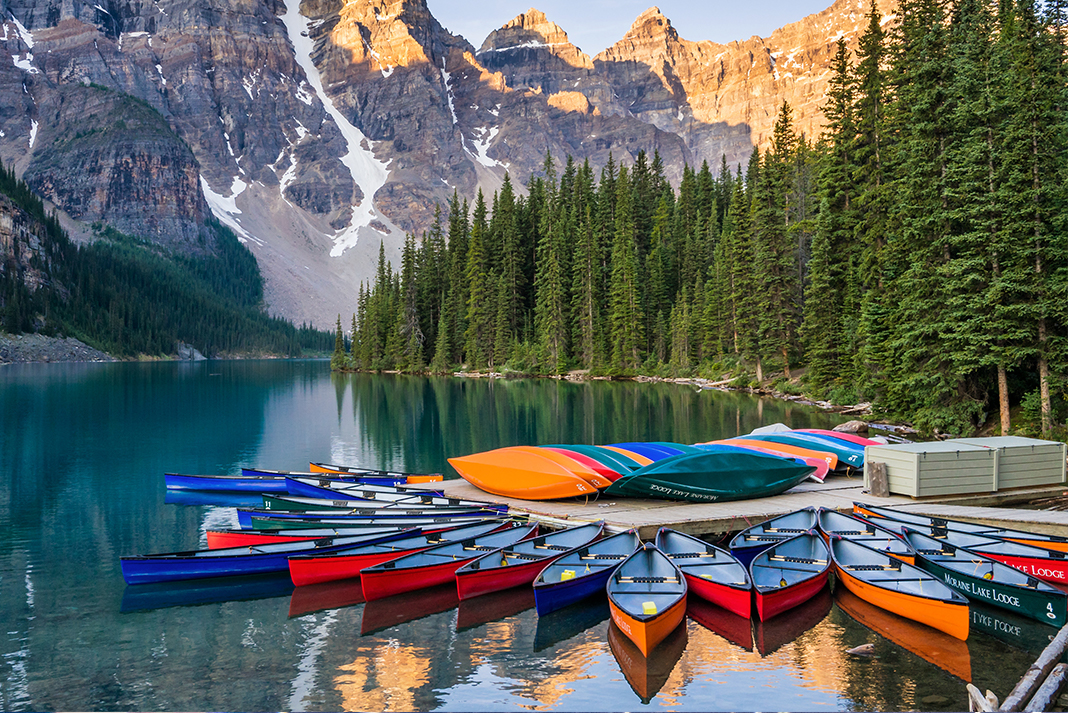The material a canoe is made of affects performance, durability, weight, aesthetics, and price. Choosing a canoe is a matter of weighing the pros and cons. When considering price, think long-term investment. The canoe you buy today may last a hundred years.
The question of what is the best canoe material comes down to what you are going to use the canoe for, how much maintenance you want to invest, where you’ll be storing it and how much you want to spend, among other considerations. Find out more about the different canoe material types below, and weigh the advantages and disadvantages of each for yourself.
Once you know which type of canoe material you want, select it from the “Primary Material” filter in our Paddling Buyer’s Guide to view every model on the market.
Canoe material comparison
Wood
Though the history of wooden canoes dates back centuries, they’re hardly a thing of the past. Even with space-age materials, it’s hard to beat the feel and aesthetics of wood on water.
Most cedar strip and wood and canvas canoes today are handmade by DIYers. The rest are custom-made by woodworkers, and their high price reflects it. Yet, with indoor storage and a small amount of yearly maintenance, your canoe will be a legacy for your grandkids to enjoy.

Pros: The aesthetics, quiet paddling and luxurious feel. With just a few woodworking tools, $1,000-worth of materials and a hell of a lot of patience, you can build your own piece of history.
Cons: If you don’t build your own, it’ll cost you—a lot. Regular TLC and weight are potential deterrents.
Best Use: Voyageurs, family and cottage and anyone mad for trad.
Composites
Manufacturers have long favored the mainstays of the composite scene—fiberglass, aramid (Kevlar and Twaron, etc.) and carbon—in their quest to bring the triumvirate of canoe virtues to paddlers: durable, lightweight and inexpensive.
It used to be that you could have two of those characteristics, but not all three. That has begun to change as manufacturers experiment with a variety of new fabrics and resins. The composite canoe category includes the widest range of specs, from $999 cheapskates to $3,500 featherweights. Some manufacturers are now offering composites as river runners and wilderness tripping alternatives to Royalex.

Pros: Exceptional strength to weight ratios. Performance-oriented shapes. Low maintenance.
Cons: Labor-intensive processes and premium materials simply cost more. Generally, lighter means less durable.
Best For: Lakewater trippers, racers and magazine editors who don’t want to lift heavy things.
Aluminum
The popularity of recreational canoeing is credited by many historians to the mass-produced aluminum Grumman canoe of the ‘70s, which took paddling out of the domain of the handy and wealthy, putting it into the hands of the people.
Noble history aside, manufacturing options have come a long way since riveting sheets of aluminum together. Still today, some outfitters, camps and duck hunters prefer its durability.
Pros: Lasts forever. Relatively inexpensive.
Cons: Heavy, cold and noisy. Aesthetically as pleasing as a B52 bomber.
Best For: Burt Reynolds and Ned Beatty.
Plastic
Many less expensive canoes are made by heating and spinning plastic pellets inside a mold inside a giant oven. Historically, this construction method didn’t allow for sharp and narrow entry lines of more performance-oriented designs.
However, it’s an inexpensive process creating durable canoes. Expect your plastic canoe to be dragged to the shore and then slide over rocks without complaint.

Pros: Inexpensive. Colorful. Virtually no maintenance required.
Cons: Susceptible to sun damage. Lack of rigidity can lead to poor performance over time. Heavy.
Best For: Recreational paddlers and rambunctious kids. Perfect for a cottage.
Softshell
Travel canoes are made of durable and flexible reinforced fabrics like PVC, polyester and nylon. Some require setting up an internal structure, giving form to the fabric, while others are completely inflatable. Many will pleasantly surprise you with their durability, performance and price. Some models are rated for class IV whitewater.

Pros: Fit your canoe in your closet and trunk, or check it on your charter flight. Often lightweight.
Cons: Some assembly required.
Best For: Remote expeditions and city slickers strapped for space.
VIEW ALL FOLDING & INFLATABLE CANOES
The choice of canoe material will determine your paddling destinations and dreams. | Feature Photo: flickr.com/MathewIngram






